One of the largest collections of royal Kingdom of Judah seal impressions has been uncovered at a massive First Temple-period public tax collection and storage complex being excavated near the new United States Embassy in Jerusalem. The main Iron Age structure is exceptional in terms of both its size and architectural style, said Israel Antiquities Authority archaeologist Neri Sapir, who co-directed the excavation.
Uncovered only three kilometers (1.8 mile) outside the Old City, the compound is believed by Israel Antiquities Authority archaeologists to have served as an administrative center during the reigns of Judean kings Hezekiah and Menashe (8th century to the middle of the 7th century BCE).
Over 120 jar handles stamped 2,700 years ago with ancient Hebrew script seal impressions were discovered at the site, clearly indicating the location’s use as a storage and tax center, according to an IAA press release Wednesday. Prevalent among the stamped inscriptions is “LMLK,” “LamMeLeKh,” or “Belonging to the King,” a way of marking that the foodstuffs stored in the jars had been tithed to the Judean ruler.
This trove of LMLK seal impressions adds to the over 2,000 similar seals previously discovered at excavations and allows archaeologists to rethink the administrative and tax collection systems of the Kingdom of Judah.
“This is one of the most significant discoveries from the period of the Kings in Jerusalem made in recent years. At the site we excavated, there are signs that governmental activity managed and distributed food supplies not only for shortage but administered agricultural surplus amassing commodities and wealth,” said IAA excavation co-directors Sapir and Nathan Ben-Ari in a press release Wednesday.
According to the archaeologists, the large number of seal impressions here and at nearby Kibbutz Ramat Rachel shows that much of the Kingdom of Judah’s governmental administration took place outside the City of David during at least the final centuries of the monarchy.
The ongoing salvage excavations in Jerusalem’s Arnona neighborhood are conducted by the Israel Antiquities Authority, funded by the Israel Land Authority and administrated by the Moriah Jerusalem Development Corporation ahead of the construction of a new building project.
The IAA’s Jerusalem District Archaeologist Dr. Yuval Baruch said the agencies are working together to preserve the site within the plan of the new project as part of the IAA’s trend of sustainable development of local heritage.
“The archaeological discoveries at Arnona identify the site as a key site — the most important in the history of the final days of the Kingdom of Judah and of the return to Zion decades after the destruction of the Kingdom. This site joins a number of other key sites uncovered in the area of Jerusalem which were connected to the centralized administrative system of the Kingdom of Judah from its peak until its destruction,” said Baruch.
Death, idolatry, and taxes
A collection of what appear to be clay idols was also discovered at the site. According to Sapir and Ben-Ari, “Some of the figurines are designed in the form of women, horse riders or as animals. These figurines are usually interpreted as objects used in pagan worship and idolatry — a phenomenon, which according to the Bible, was prevalent in the Kingdom of Judah.”
While perhaps not all citizens participated in idol worship, taxes were assured — as illustrated by the LMLK handles and other archaeological evidence. According to the archaeologists’ discoveries, taxes in the form of agricultural produce such as wine and olive oil were collected in an orderly manner.
“The site once dominated large agricultural plots and orchards of olive trees and grape vines which included agricultural industrial facilities such as winepresses for winemaking,” said the archaeologists.
Royal LMLK jar handle impressions have been found at excavations associated with the Kingdom of Judah, mostly around Jerusalem. Several complete pots stamped with LMLK were found at Lachish in the Judaean foothills. Some two dozen types of impressions have been found so far, though all are typically stamped with a sun disc that is flanked by two (as in the case of Arnona) or four wings.
Usually the ancient Hebrew LMLK inscription appears above the sun disc; in the case of the Arnona impressions and also some of those found at excavations elsewhere, below the sun disc is recorded one of four cities in the kingdom of Judah: Hebron, Ziph, Socho or Mmst.
According to Sapir and Ben-Ari, Hebron, Ziph and Socho are clearly identified with known ancient cities in Judea in the Hebron Hills area. “However, the identification of Mmst is still controversial.”
A 2011 Tel Aviv University article, “Judahite Stamped and Incised Jar Handles: A Tool for Studying the History of Late Monarchic Judah,” explains that the stamped handles are a widely known phenomenon of late Iron Age Judah. “Excavations and surveys conducted in this area have yielded over 2000 stamped or incised jar handles dated to the very short period spanning from the late 8th century to the destruction of the kingdom at the beginning of the 6th century BCE.”
Also found among the Arnona impressions and at other excavations are names of senior officials and wealthy individuals from the Kingdom of Judah: Naham Abdi, Naham Hatzlihu, Meshalem Elnatan, Zafan Abmetz, Shaneah Azaria, Shalem Acha and Shivna Shachar.
“These names appear on storage jar handles at various sites across the Kingdom of Judah and attest to the elite position of those whose names are impressed on the jars,” said the archaeologists. It is hypothesized that these are senior officials who were in charge of specific economic areas, or perhaps wealthy individuals at that time — those who owned large agricultural lands, propelled the economy of their district, and owned private seals.”
A rock-hard mystery
According to the archaeologists, the Arnona site is dated to a period in which the Bible documents tumultuous upheavals, including the failed Assyrian King Sennacherib campaign to conquer Jerusalem in the days of King Hezekiah. The artifacts at the site, including the stamped seals, show that taxation likely remained uninterrupted during this period.
“It may be that the government economic provisions indicated by the stamp seals are related to these events, however, the excavation revealed that the site continued to be active after the Assyrian conquest,” say the archaeologists.
With the destruction of the Kingdom of Judah in 586 BCE and Babylonian exile, the site was abandoned, said the researchers. However, shortly thereafter, “the site was resettled and administrative activity resumed. During this time governmental activity at the site was connected to the Judean province upon the Return to Zion in 538 BCE under the auspices of the Achaemenid Persian Empire, which then ruled over the entire ancient Near East and Central Asia.”
The archaeologists’ findings corresponds with the hypothesis presented by the Tel Aviv University article on the jar handles. “The stamped jar handles were part of the Judahite administrative system that was already established when Judah became an Assyrian vassal kingdom and continued to be in use as long as Judah was a vassal kingdom and afterwards a province under the rule of the Babylonian, Persian and Ptolemaic empires.” . . .
After this resumption of activity at the Arnona administration site, however, at some point thousands of years ago the large building at the site was covered over with a massive pile of flint stones to create a 20-meter (65.5 foot) artificial hill spread over seven dunams that is still visible to the naked eye. The archaeologists think that another storage facility may be under the stones.
“These artificial stone hills have been identified at several sites in Jerusalem and are a phenomenon of the end of the First Temple period and have aroused the curiosity and fascination of Jerusalem researchers since the beginning of archaeological research in the area,” said the archaeologists.
“Nevertheless, the reason for the huge effort made in stacking them over many acres remains an unresolved archaeological mystery,” they said.

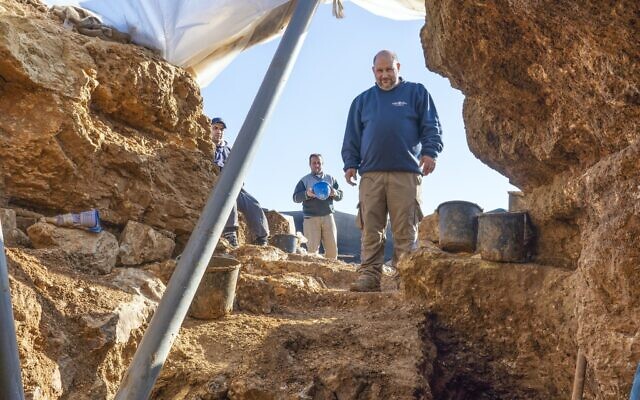
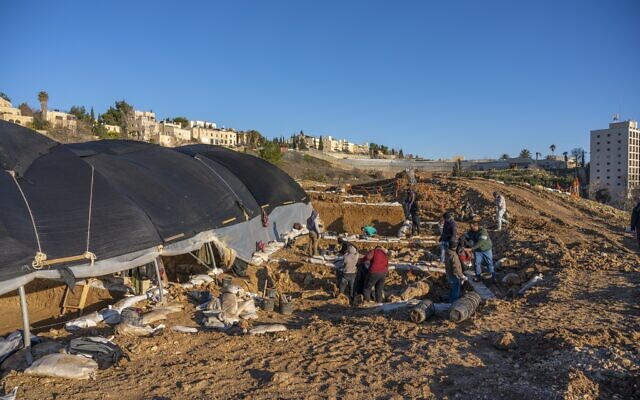
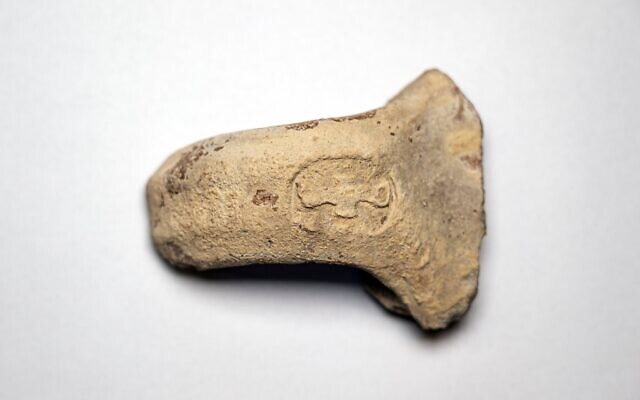
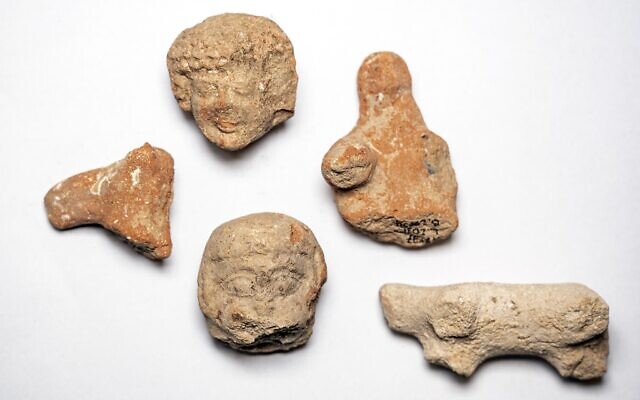
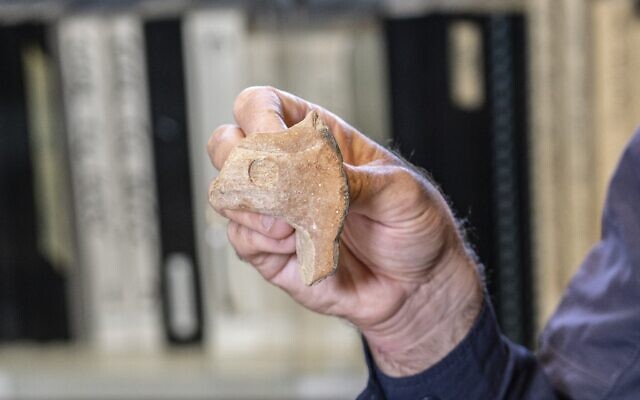

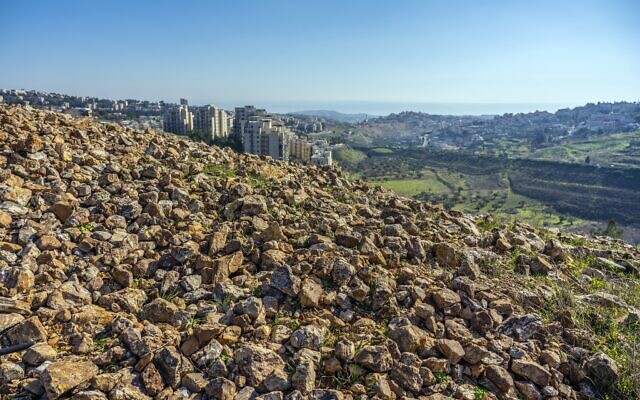






Comments
Thank you Lord that you continue to present the world with evidence of the truth of your word. We ask that you open the blind yes of those who deny you!
Our amazing God will not be denied. Make known His deeds among the people, make them remember His name is reknown. (Isaiah 12)